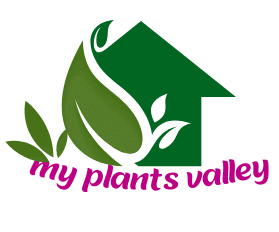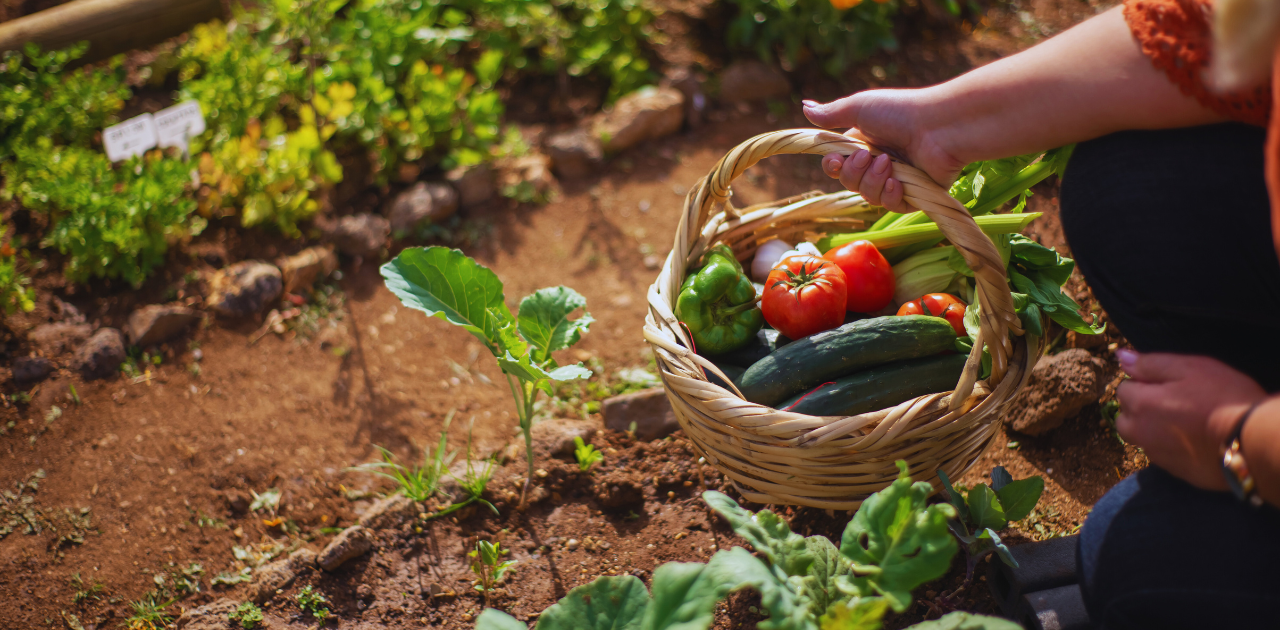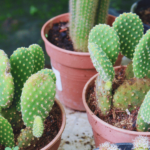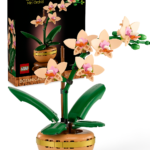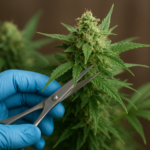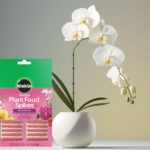Planting in August might not be the first thing that comes to mind when you think about gardening, but it’s a fantastic time to sow various crops. The warm soil encourages seeds to germinate quickly, and there’s still plenty of growing season left to enjoy a fruitful harvest. Plus, late summer planting can help extend your garden’s productivity into the fall. Whether you want to grow leafy greens, root vegetables, or herbs and flowers, August provides a unique opportunity to make the most of your garden space.
By understanding your climate zone and selecting the right plants, you can enjoy a vibrant, productive garden well into the cooler months. So, if you’re wondering what to plant in August, this guide will help you maximize your garden’s potential and keep your green thumb busy all season.
Importance of Planting in August

Planting in August is essential for gardeners who want to extend their growing season and make the most of their garden space. During this month, the soil remains warm from the summer heat, ideal for seed germination and root development. This warmth allows plants to establish themselves quickly before the cooler fall temperatures. Additionally, August planting helps fill the gaps left by summer crops that have already been harvested, ensuring continuous production and avoiding bare patches in the garden.
Another critical aspect is pest and disease management. Many pests that thrive in the peak summer months start to decline in August, reducing the risk of infestations that can harm young plants. Moreover, late summer planting can help gardeners take advantage of the natural rainfall often accompanying the changing season, reducing the need for supplemental watering. By understanding and leveraging these benefits, gardeners can enjoy a more productive and healthier garden well into the fall.
Benefits of Late Summer Planting
Late summer planting offers a range of benefits that can significantly enhance your gardening experience and yield. One of the primary advantages is the ability to extend the growing season. By planting in August, you can harvest fresh produce well into the fall, providing a steady supply of vegetables, herbs, and flowers even as the days grow shorter and more relaxed. This extended harvest period means you can enjoy fresh, homegrown food for longer, reducing reliance on store-bought produce.
Another key benefit is improved soil health. Planting cover crops or green manures in August can help enrich the soil by adding organic matter and essential nutrients. These plants can also help prevent soil erosion and suppress weeds, creating a more fertile and manageable garden bed for the next growing season. Furthermore, the late summer and early fall cooler temperatures are less stressful for many plants, leading to more robust, healthier growth. By taking advantage of these benefits, you can maximize your garden’s potential and enjoy a bountiful harvest throughout the late summer and fall seasons.
Advantages of August Planting

Extending the Growing Season
Planting in August extends your garden’s productivity into the fall. Many cool-season crops thrive in the cooler temperatures of late summer and early fall, providing fresh produce beyond the primary growing season.
Improving Soil Health
Late summer planting can improve soil health by adding organic matter and reducing erosion. Cover crops planted in August can enhance soil structure, increase nutrient content, and suppress weeds, preparing the soil for future plantings.
Read to know more: Can I Use Outdoor Soil for Indoor Plants? Safe planting
How to Determine Your Climate Zone
You can choose plants that will thrive by accurately determining your climate zone, ensuring a successful and productive garden.
Determining your climate zone is essential for successful gardening. Here’s a guide to help you find your zone:
Use the USDA Plant Hardiness Zone Map
- Access the Map: Available online on the USDA website.
- Enter Your Location: Use interactive versions by entering your zip code, city, or address.
- Find Your Zone: The map will display your zone, ranging from 1 (coldest) to 13 (warmest), based on average annual minimum winter temperatures.
Consult Local Resources
- Local Nurseries: Staff can offer recommendations, and plants are often labeled with appropriate hardiness zones.
- Extension Services: Contact agricultural extension offices for detailed, localized information.
- Gardening Guides: Use local books and online forums written by experienced gardeners.
Use Online Tools and Apps
- Garden Planner Apps: Apps like “GrowVeg” and “Gardenate” provide zone information and planting guides.
- Weather Websites: Weather.com and AccuWeather offer climate zone info and weather forecasts.
- Interactive Zone Maps: Websites like the Arbor Day Foundation offer detailed zone maps.
Observe Your Local Environment
- Plant Behavior: Note which plants thrive and which struggle in your area.
- Temperature Patterns: Track the first and last frost dates to understand your growing season.
- Microclimates: Identify areas in your garden that are warmer or cooler due to shading, wind protection, or buildings.
Vegetables to Plant in August
Planting vegetables in August can extend your growing season and provide a bountiful harvest well into the fall. Here are some great options for late summer planting:
Leafy Greens
Lettuce:
Lettuce, especially varieties like butterhead, romaine, and leaf lettuce, is an ideal vegetable to plant in August. The cooler temperatures of late summer and fall help prevent bolting and ensure tender, crisp leaves. Plant seeds directly in the garden and keep the soil consistently moist.
Spinach:
Spinach thrives in the cooler temperatures of fall. Planting in August allows it to increase in the warm soil and mature as the weather cools. Spinach is packed with nutrients and can be harvested as baby greens or full-sized leaves.
Kale:
Kale is a hardy green that can withstand light frosts, perfect for late summer planting. It will grow well into the fall and even winter in some climates. Kale leaves can be harvested at various stages, adding a nutritious boost to salads, soups, and smoothies.
Root Vegetables
Carrots:
Carrots planted in August will be ready for harvest in the fall. The warm soil encourages quick germination, and the cooler temperatures enhance their sweetness. Ensure the soil is loose and well-drained to allow the roots to develop properly.
Beets:
Beets are versatile vegetables that can be planted in August for both their roots and greens. They are easy to grow and thrive in cooler temperatures. Harvest the roots when they are small and tender, or let them grow more significant for roasting and other culinary uses.
Radishes:
Radishes are one of the fastest-growing vegetables, perfect for late-season planting. They can be ready to harvest in as little as three weeks. Radishes thrive in cooler weather and add a spicy crunch to salads and dishes.
Other Vegetables
Peas:
Choose a fast-maturing variety of peas for an August planting. Peas thrive in cooler temperatures and can produce a bountiful harvest before the first frost. They also enrich the soil with nitrogen, benefiting the crops that follow.
Beans:
Bush beans are an excellent option for a quick late summer crop. They increase and can provide a harvest before the cold weather sets in. Beans are wonderful for soil health, improving nitrogen levels for future plantings.
Broccoli:
Planting broccoli seeds or transplants in August allows them to mature in the cooler fall temperatures. Broccoli is a nutritious addition to your garden, and its florets can be harvested over time, extending the harvest window.
Tips for Successful vegetables August Planting
- Soil Preparation: Ensure your soil is well-drained and rich in organic matter. Adding compost can improve soil fertility and structure, providing a healthy environment for your new plants.
- Watering Strategies: Water deeply and consistently, but avoid overwatering. Newly planted seeds and transplants need regular moisture to establish roots, but the soil should not remain waterlogged.
- Pest Control: Look for pests that thrive in late summer and take appropriate measures. Organic pest control methods and encouraging beneficial insects can help maintain a healthy garden ecosystem.
Herbs to Plant in August
Planting herbs in August is a great way to enjoy fresh flavors in your cooking and keep your garden productive as the season transitions into fall. Here are three excellent herbs to plant in late summer: basil, cilantro, and dill.
Basil
Why Plant Basil in August?
Basil thrives in warm temperatures and can continue to grow until the first frost. Planting basil in August ensures you’ll have fresh leaves for late summer and early fall dishes. It’s a versatile herb that adds a delightful aroma and flavor to various recipes, from pesto to salads.
How to Plant Basil:
- Choose a Sunny Spot: Basil needs at least six hours of sunlight daily. Plant it in a location that gets plenty of direct sunlight.
- Soil Preparation: Ensure the soil is well-drained and rich in organic matter. Adding compost can help improve soil quality.
- Planting Method: You can start basil from seeds or transplants. If planting seeds, sow them about 1/4 inch deep and space them 12-18 inches apart. For transplants, plant them at the same depth they were growing in their pots.
- Watering: Keep the soil consistently moist but not waterlogged. Water basil at the base to avoid wetting the leaves, which can lead to fungal diseases.
- Harvesting: Harvest basil leaves regularly to encourage new growth. Pinch off the top leaves to prevent the plant from flowering, which can cause the leaves to become bitter.
Cilantro
Why Plant Cilantro in August?
Cilantro prefers cooler temperatures and can bolt quickly in the summer heat. Planting it in August allows it to grow in the cooler weather of late summer and early fall, providing fresh cilantro leaves for an extended period.
How to Plant Cilantro:
- Choose a Partly Shaded Spot: Cilantro benefits from afternoon shade, especially in hotter climates. This helps prevent bolting.
- Soil Preparation: Cilantro grows best in well-drained soil rich in organic matter. Adding compost can improve soil fertility.
- Planting Method: Sow cilantro seeds directly into the garden about 1/4 inch deep and 6 inches apart. Once established, thin seedlings are about 12 inches apart.
- Watering: Keep the soil consistently moist, but avoid overwatering. Watering at the base of the plants helps prevent fungal issues.
- Harvesting: Harvest cilantro leaves when they are about 4-6 inches long. Regular harvesting encourages new growth and delays bolting. You can also let some plants go to seed and harvest the seeds (coriander) for culinary use.
Dill
Why Plant Dill in August?
Dill proliferates and thrives in cooler temperatures, making it an excellent choice for August planting. It’s a versatile herb used in pickling, salads, and as a seasoning for fish and other dishes.
How to Plant Dill:
- Choose a Sunny Spot: Dill needs full sun to grow well. Select a location that receives at least six hours of direct sunlight daily.
- Soil Preparation: Dill prefers well-drained soil that is not too nutrient-rich. Adding moderate compost can help with soil structure without making it too fertile.
- Planting Method: Sow dill seeds directly into the garden about 1/4 inch deep and 12 inches apart. Once established, thin seedlings to 18-24 inches apart.
- Watering: Water dill regularly to moisten the soil, especially during dry spells. Avoid overwatering, as dill does not like soggy soil.
- Harvesting: Once the plants are about 8 inches tall, harvest dill leaves as needed. You can also let the plants flower and produce seeds, which can be used in pickling and as a spice.
- Planting flowers in August can extend the blooming season in your garden and add vibrant colors as the summer winds down.
Flowers in August

Annual Flowers
1. Marigolds:
- Why Plant Them: Marigolds are vibrant and easy to grow, adding color to your garden.
- Benefits: They deter pests and are low maintenance.
- Planting Tips: Sow directly into the soil or transplant seedlings. Water regularly, but avoid overwatering.
2. Petunias:
- Why Plant Them: Petunias bloom profusely until frost, offering a variety of colors and patterns.
- Benefits: Suitable for beds, containers, and hanging baskets.
- Planting Tips: Plant in well-drained soil and ensure they get plenty of sunlight.
3. Zinnias:
- Why Plant Them: Zinnias are fast-growing and come in various colors.
- Benefits: Attract pollinators like butterflies.
- Planting Tips: Sow seeds directly in sunny spots with well-drained soil.
Perennial Flowers
1. Echinacea (Coneflowers):
- Why Plant Them: Echinacea are hardy and drought-resistant, with long-lasting blooms.
- Benefits: Attract pollinators and have medicinal properties.
- Planting Tips: Plant in full sun with well-drained soil. Water regularly until established.
2. Black-eyed Susan:
- Why Plant Them: These cheerful yellow flowers bloom from late summer into fall.
- Benefits: Low maintenance and drought-tolerant.
- Planting Tips: Plant in full sun and well-drained soil. Deadhead to encourage more blooms.
3. Chrysanthemums:
- Why Plant Them: Chrysanthemums (mums) are classic fall flowers in various colors and forms.
- Benefits: Extend the blooming season into late fall.
- Planting Tips: Plant in well-drained soil with full sun. Pinch back early to encourage bushier growth.
Bulbs and Tubers
1. Autumn Crocus:
- Why Plant Them: These bulbs bloom in late summer to early fall, providing a unique addition to your garden.
- Benefits: Easy to grow and add interest late in the season.
- Planting Tips: Plant in well-drained soil with plenty of sunlight. Water sparingly.
2. Dahlias:
- Why Plant Them: Dahlias provide large, colorful blooms lasting until the first frost.
- Benefits: Great for cut flowers.
- Planting Tips: Plant tubers in rich, well-drained soil with full sun. Stake taller varieties to support heavy blooms.
Bulbs for Fall Blooms
- Autumn Crocus:
- Plant autumn crocus bulbs in August for beautiful fall blooms. These bulbs thrive in well-drained soil and can add a splash of color to your garden as other plants start to fade.
- Colchicum:
- Like autumn crocus, colchicum bulbs can be planted late summer for fall blooms. They produce large, showy flowers that brighten the garden in September and October.
Biennials
- Foxglove:
- Foxglove planted in August will establish roots and foliage before going dormant in winter. They will bloom the following spring and summer, adding height and elegance to your garden.
- Hollyhock:
- Hollyhocks are another biennial that can be planted in late summer. They develop roots and leaves in their first year and produce tall, striking flower spikes in their second year.
Tips for August Flower Planting
- Soil Preparation: Ensure your soil is well-drained and enriched with compost to support healthy growth.
- Watering: Keep newly planted flowers well-watered, especially during dry spells. Water deeply to encourage strong root development.
- Mulching: Apply mulch around your plants to retain soil moisture and suppress weeds.
- Pest Control: Monitor for pests and diseases, treating any issues promptly to keep your flowers healthy.
How to Prepare Your Soil for August Planting
Preparing your soil correctly is crucial for a successful August planting. Healthy soil ensures your plants have the necessary nutrients and conditions to thrive. Here are some steps to get your soil ready:
Clear the Area
Remove Old Plants:
- Clear out any old or dead plants from previous seasons. This prevents diseases and pests from carrying over to your new crops.
Weed Thoroughly:
- Remove all weeds, including the roots, to reduce competition for nutrients and water.
Test Your Soil
Soil Testing:
- Test your soil’s pH and nutrient levels using a soil testing kit or sending a sample to a local extension service. This helps you understand what amendments your soil needs.
Adjust pH:
- If your soil is too acidic, add lime to raise the pH. If it’s too alkaline, add sulfur to lower the pH. Follow the recommendations from your soil test results.
Amend the Soil
Add Organic Matter:
- Incorporate compost or well-rotted manure to improve soil structure, enhance nutrient content, and increase moisture retention. Aim to add a 2-3 inch layer of organic matter and mix it into the top 6-8 inches of soil.
Fertilize:
- Based on your soil test results, add appropriate fertilizers. For a balanced nutrient boost, consider using a slow-release, all-purpose fertilizer. Organic options like bone meal, blood meal, and fish emulsion are also effective.
Improve Soil Structure
Aerate the Soil:
- Use a garden fork or tiller to loosen the soil. This improves aeration and allows roots to penetrate more easily.
Add Sand or Perlite:
- Mix in sand or perlite to improve drainage and prevent waterlogging if your soil is heavy clay.
Mulch and Protect
Apply Mulch:
- After planting, apply a layer of mulch around your plants. This helps retain moisture, suppress weeds, and regulate soil temperature. Organic mulches like straw, wood chips, or grass clippings are excellent choices.
Cover Crops:
- Consider planting cover crops like clover or rye if you’re preparing soil for future planting. Cover crops enrich the soil with organic matter, improve structure, and prevent erosion.
Water and Monitor
Water Thoroughly:
- Water the soil deeply after adding amendments to help settle them and create a suitable environment for root growth.
Regular Monitoring:
- Monitor your soil’s moisture level and adjust watering as necessary. Consistent moisture is crucial for newly planted seeds and transplants.
Plan for Success
Companion Planting:
- Plan your garden layout to take advantage of companion planting. Some plants improve the growth and health of others when planted nearby.
Crop Rotation:
- Practice crop rotation by planting different types of crops in other areas each season. This prevents nutrient depletion and reduces the risk of pests and diseases.
Additional Tips
Use Raised Beds:
- If your garden soil has poor drainage or heavy clay, consider using raised beds filled with garden soil and compost. Raised beds warm up faster and provide better drainage.
Solarize Soil:
- Consider solarizing your soil if you have a severe weed or pest problem. Cover the soil with clear plastic for 4-6 weeks during the hottest part of summer. This heats the soil to a temperature that kills many pests, diseases, and weed seeds.
Caring for Late Summer Plants
Mulching
Mulching is essential for maintaining soil moisture, suppressing weeds, and regulating soil temperature. Apply a 2-3 inch layer of organic mulch around your plants, such as straw, wood chips, or grass clippings. This helps retain moisture and adds organic matter to the soil as it decomposes. Keep the mulch away from the plant stems to prevent rot. Regularly check and replenish mulch as needed throughout the growing season.
Fertilizing
Late summer plants need a steady supply of nutrients to thrive. Use a balanced, slow-release fertilizer or organic options like compost tea, fish emulsion, or seaweed extract. Follow the recommended application rates to avoid over-fertilizing, which can lead to nutrient imbalances and plant stress. For flowering plants, a fertilizer higher in phosphorus can promote blooming. Regularly monitor plant health and adjust fertilization practices based on their needs.
Pruning
Pruning helps maintain plant health by removing dead or diseased parts, promoting airflow, and encouraging new growth. For flowering plants, deadhead spent blooms to encourage continuous flowering. Prune herbs like basil and mint to prevent flowering and maintain bushy growth. Be mindful of each plant’s specific pruning needs and avoid over-pruning, which can stress the plant and reduce its productivity.
Harvesting Your August Plants
Timing Your Harvest
Harvesting at the right time ensures your produce’s best flavor and quality. Pick vegetables like tomatoes and peppers when they are fully colored and slightly firm. Leafy greens like lettuce and spinach should be harvested when tender and before they bolt. Root vegetables like carrots and beets can be harvested when they reach their desired size.
Techniques for Harvesting
Use sharp, clean tools to harvest fruits and vegetables to avoid damaging the plants. Use scissors or garden shears to cut leaves for leafy greens, leaving the plant base intact for regrowth. For root vegetables, gently loosen the soil around the plant and lift it carefully to avoid breaking the roots. Handle your harvest gently to prevent bruising and spoilage.
Common Mistakes to Avoid
Overwatering: Late summer heat can lead to overwatering. Ensure the soil is moist but not soggy.
Ignoring Climate Zone: Planting suitable crops for your zone can lead to better growth and higher yields. Always consider your climate zone when choosing plants.
Poor Spacing: Crowded plants compete for nutrients, water, and sunlight. Follow recommended spacing guidelines for each plant type.
Using August Produce
Fresh Salads
Many vegetables and herbs planted in August are perfect for fresh salads. Leafy greens, radishes, carrots, and herbs like basil and cilantro add vibrant flavors and colors to your dishes. Enjoy the fresh, crisp taste of homegrown produce in your meals.
Preserving and Canning
Preserving and canning your August harvest allows you to enjoy the flavors of summer year-round. Tomatoes, peppers, and herbs can be preserved in sauces, salsas, and pickles. Freezing or drying herbs ensures you have fresh seasonings on hand for cooking.
Recipes to Try
Experiment with new recipes to make the most of your August harvest. Try making homemade pesto with fresh basil, salsa with tomatoes and cilantro, or dill pickles. Incorporate fresh vegetables into soups, stews, and stir-fries for nutritious and delicious meals.
Sustainable Gardening Practices
Composting
Composting garden waste and kitchen scraps enriches your soil and reduces landfill waste. Create a compost pile or use a compost bin to recycle organic materials into nutrient-rich compost. This sustainable practice improves soil structure and fertility.
Water Conservation
Conserving water is crucial during the late summer heat. Use drip irrigation or soaker hoses to water plants efficiently, reducing evaporation. Mulching and watering in the early morning or late evening also help conserve water and keep plants hydrated.
FAQs
What vegetables can I plant in August?
In August, you can plant leafy greens like lettuce and spinach, root vegetables like carrots and beets, and herbs like basil and cilantro.
Can I plant flowers in August?
Many flowers like marigolds, zinnias, and chrysanthemums can be planted in August for fall blooms.
How do I protect my plants from late summer heat?
Use mulch to retain soil moisture, water deeply and regularly, and provide shade during the hottest parts of the day.
Is August too late to start a garden?
No, August is a great time to plant cool-season crops and prepare for a fall harvest.
How can I improve my soil for August planting?
Incorporate compost and organic matter, test your soil, and adjust pH levels.
Conclusion
Planting in August can be rewarding as it extends your growing season and allows you to enjoy fresh produce into the fall. You can ensure a successful and bountiful harvest by preparing your soil, choosing the right plants, and caring for them properly. Whether you’re planting vegetables, herbs, or flowers, the late summer garden can thrive with the proper care and attention. Embrace sustainable practices like composting and water conservation to maintain a healthy garden ecosystem. Happy gardening!
